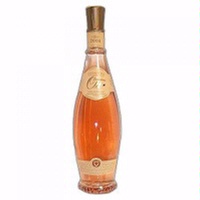Wine enthusiasts of a certain age will remember when a bottle of Mateus or Lancers rose — both light, slightly sweet, slightly spritzy — signaled a big night out. Truth be told, it was the uniquely shaped bottles of these two Portuguese pinks that most impressed. The wines were, and still are, easy to drink and refreshing, but hardly the best that rose can be.
 That was a long-ago, far-away time in the slow but inexorable evolution of the American wine palate. Following the intense but fleeting allure of Lancers and Mateus, we gave up on rose. We plunged into chardonnay and cabernet, and more recently have embraced pinot noir and crisp, aromatic whites such as gruner veltliner and albarino.
That was a long-ago, far-away time in the slow but inexorable evolution of the American wine palate. Following the intense but fleeting allure of Lancers and Mateus, we gave up on rose. We plunged into chardonnay and cabernet, and more recently have embraced pinot noir and crisp, aromatic whites such as gruner veltliner and albarino.
But there are signs rose is on the way back. While enjoying dinner recently at a local bistro that features an eclectic mix of international and domestic wines, the proprietor noticed my glass of pink stuff. Perhaps this was a sight to behold, for he stopped to chat about an upcoming wine event he had dubbed The War of the Roses.
In the course of the conversation, he made an excellent point: Rose can be an intriguing alternative when a diner can’t decide whether the dish calls for a white wine or a red wine. A case in point quickly came to mind.
I had just hosted a few friends for an evening of cataplana, a Portuguese fish stew. My recipe allows for quite a bit of flexibility, so for this cataplana I used clams, shrimp, rockfish, garlic, basil, parsley, onion, clam juice, white wine and — get this — a savory beef kielbasa.
 I opened an array of white wines and one rose: the Eberle 2011 Syrah Rose ($18). The rose, more so than the lighter white wines, had the fruit and structure to stand up to the savory aromas of the fish stew. This should come as no surprise, for the French in Provence have been serving rose with fish stew since the beginning of wine.
I opened an array of white wines and one rose: the Eberle 2011 Syrah Rose ($18). The rose, more so than the lighter white wines, had the fruit and structure to stand up to the savory aromas of the fish stew. This should come as no surprise, for the French in Provence have been serving rose with fish stew since the beginning of wine.
The Europeans have long embraced rose, particularly for consumption as the weather warms and more dining is done al fresco — away from air-conditioned comfort. A warm day, a bucket of ice, a bottle of rose, and life is good.
The south of France is a hotbed for rose, especially from the areas of Tavel and Bandol. Chateau d’Aqueria Tavel Rose, one of my personal favorites, is fermented to dryness, as are most of the top French rose wines. It is a contrast in style, however, from another popular dry rose from nearby, the Domaines Ott lineup mostly sourced from the Cotes de Provence. The Ott style is light in color, higher in acidity and more mineral-driven at its core, with a crunchy freshness. D’Aqueria Tavel is deeper in color and bursting with the aroma of ripe strawberries.
Over the Pyrenees in the Navarra region of northern Spain, the dry rose is among the finest in the world and a frequent accompaniment to jamon Serrano or jamon Iberico. One of the best is from the Julian Chivite winery.
A good rule of thumb is that one size does not fit all when it comes to rose. Some are fruitier than others, and what you might like depends strictly upon personal taste preferences. Rose also comes in a wide range of sweetness levels, from dry to very sweet.
I generally prefer rose that is dry and crisp, with subdued fruit aromas. But then my mood swings and I am down with a fruity New World rose that is so bright in color it could almost pass for a red. The beauty of rose wine is that it’s usually not terribly expensive, so you can experiment until you find one you like.
That is what I truly recommend.
8
